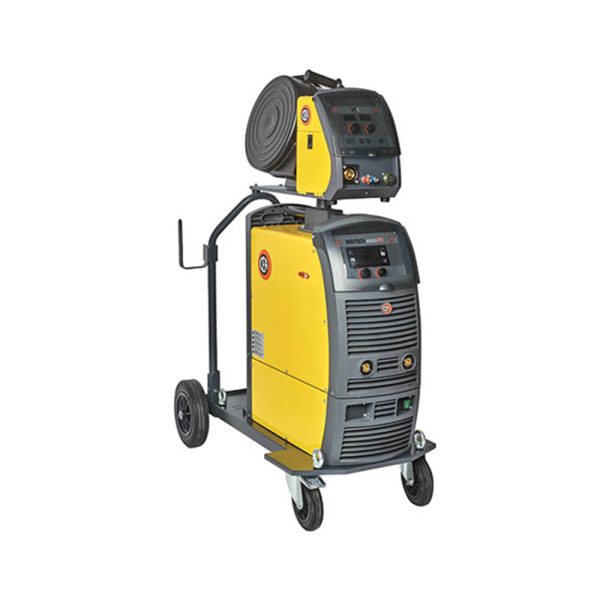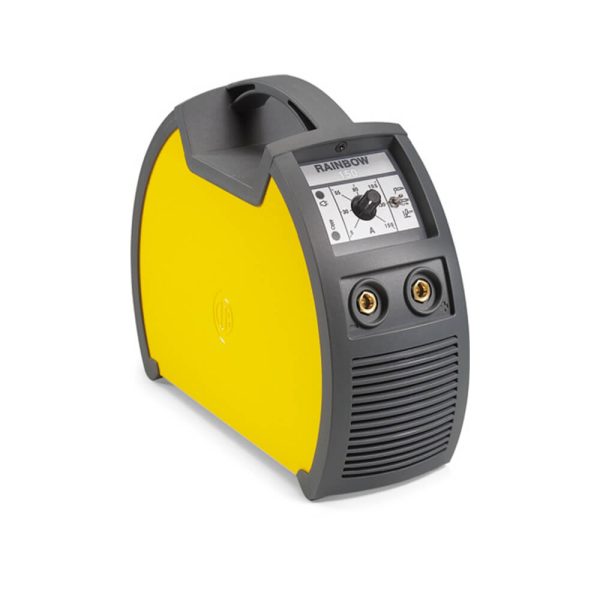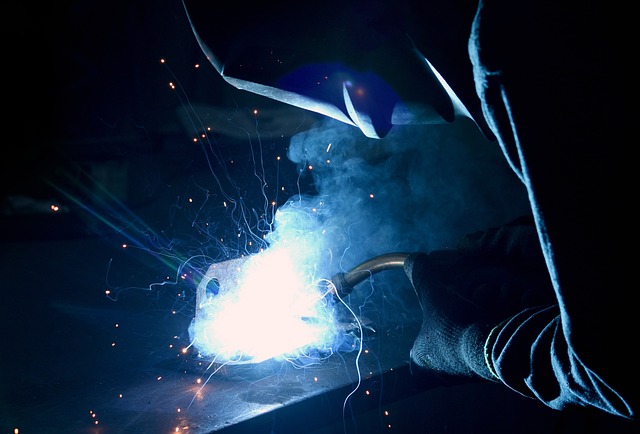Welding is a process of joining two or more metal pieces together by applying heat, pressure, or both, creating a strong and permanent bond. It is vital in various industrial applications, from manufacturing and construction to automotive and aerospace industries. Welding is significant in industrial settings because it allows for the fabrication and repair of metal structures and components, enabling the production of complex and durable products.
The advancements in welding technology have further enhanced its importance in industrial applications. These advancements have led to the development of more efficient and precise welding techniques, resulting in improved productivity and quality. For instance, the introduction of automated welding systems and robotic welders has increased the speed and accuracy of welding processes, reducing human error and increasing overall efficiency.
Advancements in welding technology have revolutionized the industry by enhancing weld strength and integrity through innovative processes like laser welding and friction stir welding. These advancements have expanded the range of weldable materials, including exotic alloys and dissimilar metals, and opened up new possibilities in engineering design. Moreover, welding technology has prioritized safety and environmental concerns. Developing advanced shielding gases and consumables have reduced hazardous fume emissions and improved working conditions. Additionally, integrating non-destructive testing techniques and real-time monitoring systems ensures weld integrity and prevents costly failures, thus enhancing overall quality control in the welding process.
Welding in the Construction Industry
Standard welding techniques and processes utilized in construction include shielded metal arc welding (SMAW), gas metal arc welding (GMAW), flux-cored arc welding (FCAW), and submerged arc welding (SAW). Each technique has advantages and is chosen based on factors such as the type of metal, joint configuration, and project requirements.
In structural steel fabrication, welding connects steel beams, columns, and other components, forming the skeletal framework of buildings, bridges, and other structures. Welding processes like SMAW and GMAW are commonly used in this application. Pipeline welding is another critical construction application where welding is extensively utilized. It involves joining sections of pipes to create a continuous pipeline network for transporting fluids or gases. Techniques like SMAW, GMAW, and SAW are commonly employed in pipeline welding, ensuring strong and leak-free connections.
Depending on the specific technique and application, various welding equipment is employed in construction projects. Manual Metal Arc (MMA) welding, also known as stick welding, utilizes a power source, electrode holder, and coated electrodes to create an electric arc for welding. Metal Inert Gas (MIG) welding uses a continuous wire electrode fed through a welding gun and a shielding gas to perform the welding process. Stud welding is another technique used in construction, where metal studs or fasteners are welded to a base material, providing a strong connection point. These examples illustrate the vast array of equipment utilized in construction welding, showcasing the versatility and adaptability of the welding process to meet the specific needs of various construction applications.
Check out our MMA welding machines and MIG welding machines if you are looking for one!

Welding in Oil & Gas Industry
Welding plays a critical role in the oil and gas industry, where the reliability and integrity of welded joints are of utmost importance for the safe and efficient operation of various processes. Welding is used extensively in manufacturing oil and gas equipment, such as pipelines, storage tanks, pressure vessels, and offshore structures. It ensures these components’ structural integrity and leak-free performance, even in harsh and demanding environments. High-quality welding techniques and procedures are crucial to prevent weld failures that could lead to costly and potentially hazardous consequences.
Different welding methods are employed in the oil and gas industry based on specific requirements and materials. SMAW offers versatility, handling a wide range of materials and thicknesses. GMAW or MIG welding provides high speed and productivity for large-scale fabrication. TIG torch welding ensures precise and high-quality welds, especially for non-ferrous metals. Stud welding securely attaches metal studs or fasteners, while Resistance Welding efficiently joins thin sheets or components. Various welding equipment is utilized, such as MMA welding machines, MIG welding machines with power sources and shielding gas systems, TIG welding machines with power sources and gas supply systems, specialized devices for stud welding, and resistance welding machines employing electrical currents and pressure. These welding techniques and equipment ensure the reliable and safe operation of critical processes and equipment in the oil and gas industry.
Welding in the Energy Sector
Welding is vital in the energy sector, encompassing production and distribution processes. It is instrumental in constructing and maintaining power plants, oil and gas pipelines, and renewable energy projects. In power plants, welding is used extensively to fabricate and repair boilers, turbines, and other critical components. It ensures these systems’ structural integrity and efficiency, contributing to reliable electricity generation. Welding is crucial for constructing and maintaining pipelines transporting oil and gas over long distances in the oil and gas industry. Welded joints provide strength and integrity to the channels, ensuring energy resources’ safe and efficient distribution. Furthermore, welding is employed in renewable energy projects such as solar and wind farms to assemble and install structural components and support systems. It plays a crucial role in ensuring the stability and longevity of these renewable energy installations.
Various welding techniques and equipment are utilized in the energy sector to meet the specific requirements of different applications. MIG and TIG welding techniques are commonly used for their versatility, allowing for efficient and high-quality welds on various materials. Stud welding is employed to secure metal studs or fasteners to base materials, providing solid connections in energy infrastructure. Resistance welding, including spot welding machine and seam welder, is utilized for joining thin sheets or components with speed and efficiency. These welding techniques are supported by MIG and TIG welding machines, stud welding machines, and resistance welding machines. Utilizing these welding techniques and equipment ensures the integrity, reliability, and safety of energy production and distribution systems in the energy sector.
Welding in the Automotive Industry
Welding assumes a significant role within the automotive industry, acting as a fundamental process in the manufacturing of vehicles. Its primary function is proficiently joining diverse metal components, ensuring the structural integrity and fabrication of robust and enduring automobiles. The extensive implementation of welding is witnessed throughout the vehicle assembly process, facilitating the creation of car bodies, chassis, and other vital constituents. By harnessing welding capabilities, automotive manufacturers can forge sturdy connections between metal parts, thereby augmenting safety measures, enhancing performance attributes, and elevating the overall quality of the vehicles. Moreover, welding facilitates the seamless integration of distinct materials, encompassing steel, aluminium, and high-strength alloys, thereby enabling the construction of lightweight and fuel-efficient automobiles. The precision and reliability inherent in welding techniques contribute significantly to the overall integrity and longevity of automotive structures, effectively addressing the exacting requirements and rigorous standards imposed by the industry.
Welding techniques are extensively utilized in the automotive industry for vehicle assembly. MIG welding offers versatility, speed, and compatibility with various metal types and thicknesses, making it suitable for joining car body panels, frames, and structural components. TIG welding produces high-quality welds, ideal for aesthetic appeal and excellent integrity applications. Stud welding securely attaches fasteners, while resistance welding quickly joins sheet metal parts. The plasma cutter machine ensures precise cutting during component fabrication. These techniques are vital in producing automotive components like exhaust systems, fuel tanks, suspension, and engine components. The equipment includes MIG and TIG welding machines, stud welding machines, resistance welding machines, and plasma cutting machines. The successful application of these welding techniques and equipment guarantees the quality, reliability, and performance of vehicles in the automotive industry.
Welding in the Shipbuilding Industry
Welding in the shipbuilding industry, serving both construction and repair purposes. It is crucial for joining steel plates and sections, creating solid and watertight structures for maritime vessels. Welding techniques like TIG welding ensure precise and high-quality welds, especially suitable for thin plates in shipbuilding applications. Stud welding allows for the secure attachment of metal studs or fasteners, while plasma cutting enables precise and efficient cutting of steel components during ship construction and repair. Automated welding systems, such as auto carriages, enhance productivity and consistency in large-scale shipbuilding projects. The maritime environment presents unique challenges, including corrosion from saltwater, dynamic loads, and temperature variations, necessitating careful selection of welding procedures and materials. Attention to joint preparation, cleaning, and surface treatment is essential to achieve durable welds. Compliance with stringent safety regulations is crucial for welders working at heights, confined spaces, or near flammable materials.
Welding in the shipbuilding industry requires meticulous considerations to meet the demands of constructing and maintaining seaworthy vessels. The selection of appropriate welding techniques and equipment, such as TIG welding, stud welding, plasma CNC cutting machines, and automated systems, is essential for ensuring the integrity and strength of ship structures. Overcoming challenges related to the maritime environment, including corrosion, dynamic loads, and safety regulations, is crucial for successful welding in shipbuilding. By addressing these considerations and employing best practices, the shipbuilding industry can rely on welding to construct and repair ships that withstand the demanding conditions of the sea.

Welding in the Aerospace Industries
Welding in the aerospace industry involves unique requirements due to the stringent demands of aircraft manufacturing and repair. The aerospace sector relies on welding to join critical components, such as fuselages, wings, engine parts, and landing gear, with exceptional precision and quality. The welds must adhere to strict specifications to ensure the aircraft’s structural integrity, safety, and performance. In addition to providing secure joints, aerospace welding must meet stringent weight requirements to ensure the aircraft’s overall weight is minimized for fuel efficiency. Welding processes and techniques capable of producing high-quality, defect-free welds are essential to withstand the extreme conditions of aircraft, including high temperatures, vibrations, and fluctuating pressures. The precision and reliability of welding play a critical role in maintaining the strength and durability of aerospace structures, contributing to the safety and success of flight operations.
Aerospace welding presents various challenges and considerations that demand meticulous attention. One significant challenge is using specialized materials in aerospace manufacturing, such as high-strength alloys, titanium, and composites. Welding these materials requires expertise, precise control of parameters, and suitable filler metals to ensure optimal joint strength and prevent material degradation. Additionally, the stringent regulations and certifications governing the aerospace industry impose rigorous quality control measures, necessitating strict adherence to welding procedures, documentation, and traceability of materials. Safety considerations are paramount in aerospace welding, given the critical nature of aircraft operations. Welders must adhere to strict safety protocols and deeply understand the potential risks of welding in aircraft structures.
Various welding equipment is employed in aerospace applications to meet the industry’s specific needs. MIG (Metal Inert Gas) welding is commonly used for its versatility, speed, and ability to join various materials. Stud welding provides a reliable method for attaching fasteners or metal studs to aerospace components. Resistance welding techniques, including spot and seam welding, enable quick and efficient joining sheet metal parts. These equipment examples demonstrate the range of welding technologies utilized in aerospace manufacturing and repair, ensuring the highest quality, reliability, and safety standards in the aerospace industry.
Conclusion
In conclusion, the diverse welding applications discussed across various industries highlight the indispensable role of welding in driving industrial progress. From construction and automotive to energy, shipbuilding, aerospace, and beyond, welding is the foundation that enables the fabrication, repair, and assembly of critical components and structures. The significance of welding cannot be overstated, as it ensures the structural integrity, durability, and safety of various products and systems. As technology continues to advance, the future of welding holds promising developments and trends. Advancements in automation, robotics, and additive manufacturing are set to revolutionize welding processes, improving efficiency, precision, and quality. The focus on sustainable practices will also drive the development of eco-friendly welding techniques and materials. The continuous progress and innovation in welding will play a vital role in meeting the ever-evolving demands of industrial sectors, contributing to the growth and advancement of society as a whole.
Check out our company, Herztec and remember to contact us should you have any questions!

